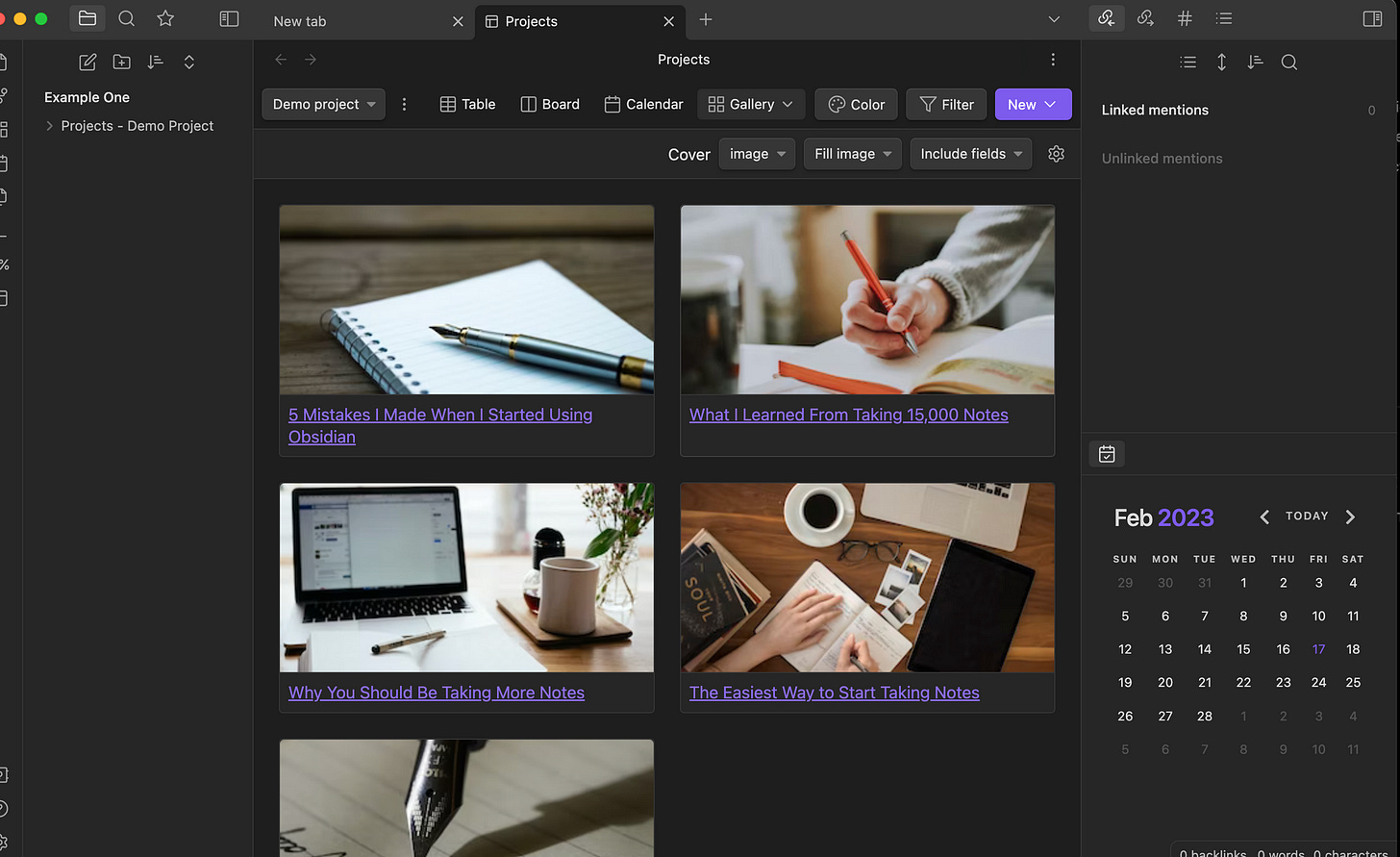Master Efficient Note-Taking in Obsidian
Elevate your note-taking game with Obsidian. Learn how to leverage templates, snippets, and markdown for quick, effective note organization and retrieval.

In the digital age, where information flows faster than we can capture, efficient note-taking has become an essential skill. Obsidian, a robust knowledge base that works on top of a local folder of plain text Markdown files, offers a flexible and dynamic approach to managing this data deluge. This blog post delves into the art of efficient note-taking with Obsidian, outlining strategies to maximize productivity, streamline your workflow, and ensure your notes are always at your fingertips.
Obsidian Rewind
Before deep diving, if this is your first time reading about Obsidian, you should read these articles first. This article jumps into more advanced discussions of Obsidian and its many features.
Getting Started with Obsidian: How to Use This Powerful Note-Taking App
My Updated Obsidian Workflow: How I Stay Organized and Get Things Done
These are the Essential Obsidian Community Plugins: The Best of the Best
Strategies for Effective Note-Taking
Effective note-taking is more than just jotting down facts; it's about capturing ideas, connections, and insights to enhance comprehension and retrieval. Here are some strategies to make the most out of Obsidian for your note-taking needs:
Active Engagement: Don't just passively record information. Use Obsidian to make connections between notes. Linking ideas helps build a knowledge graph that reflects how you think and understand topics.
Incremental Writing: Obsidian shines when used for total writing. Start with rough ideas and gradually refine them over time. This approach allows your notes to evolve, mirroring the development of your understanding.
Use Daily Notes: Start each day with a new note in Obsidian. This feature acts as a journal, helping you keep track of tasks, thoughts, and progress on projects, ensuring nothing slips through the cracks.
Using Templates and Snippets for Speed
One of the keys to efficient note-taking is minimizing repetitive tasks. Obsidian addresses this through the use of templates and snippets:
Templates: Create templates for different notes you frequently make—meeting notes, project plans, or research summaries. This ensures consistency and saves time.
Snippets: For even faster note-taking, leverage text expansion tools or Obsidian's built-in snippets for common phrases, citations, or formatting structures you use regularly.
To set up a template, create a new note that outlines the basic structure you want to use. Then, whenever you start a new note of that type, you can quickly copy and paste the template or use third-party plugins to automate the insertion of templates into new notes.
Leveraging Markdown for Quick Formatting
Markdown is a lightweight markup language with plain text formatting syntax, and it's at the heart of Obsidian's efficiency. Here's how you can use Markdown to your advantage:
Quick Formatting: Learn the basic Markdown syntax for headings, lists, bold, italics, and links. This lets you format your notes on the fly without taking your hands off the keyboard.
Embedding Content: Obsidian supports embedding other notes, images, and even blocks of text from within the same or different notes. This feature is compelling for creating a web of related ideas.
Code Blocks and Highlighting: If you're capturing technical notes, Obsidian's support for code blocks and syntax highlighting can help keep your notes organized and readable.
Organizing Notes for Easy Retrieval
The real power of Obsidian lies in its ability to help you organize and retrieve notes efficiently:
Folders and Tags: For more granular organization, use folders to categorize your notes by broad topics and tags. This dual approach makes navigating your notes intuitive and quick.
Backlinks and Graph View: Use backlinks to see which notes link to the current note, providing context and revealing relationships between ideas. The graph view visually represents the connections between your notes, offering a bird's-eye view of your knowledge base.
Search and Custom Views: Obsidian's powerful search function lets you quickly find notes. Additionally, plugins can create custom views and filters for your notes, tailoring the interface to your needs.
A Challenge to Try It
Obsidian transforms note-taking from a mundane task into an interactive, dynamic process. By leveraging templates and snippets, mastering Markdown, and organizing your notes for easy retrieval, you can significantly enhance the efficiency and effectiveness of your note-taking.
I challenge you to integrate these strategies into your Obsidian workflow. Start small by implementing templates for the notes you take most frequently. Gradually incorporate Markdown into your daily note-taking, and experiment with organizing your notes using tags and folders. As you become more comfortable, explore backlinks and the graph view to uncover the full potential of your knowledge base.
The art of efficient note-taking with Obsidian is a journey of continuous learning and improvement. As you tailor the application to your personal and professional needs, you'll find that your ability to capture, organize, and retrieve information becomes more intuitive and powerful. So, take the plunge and discover how Obsidian can revolutionize your note-taking process, turning it into an asset for creativity, productivity, and learning.




